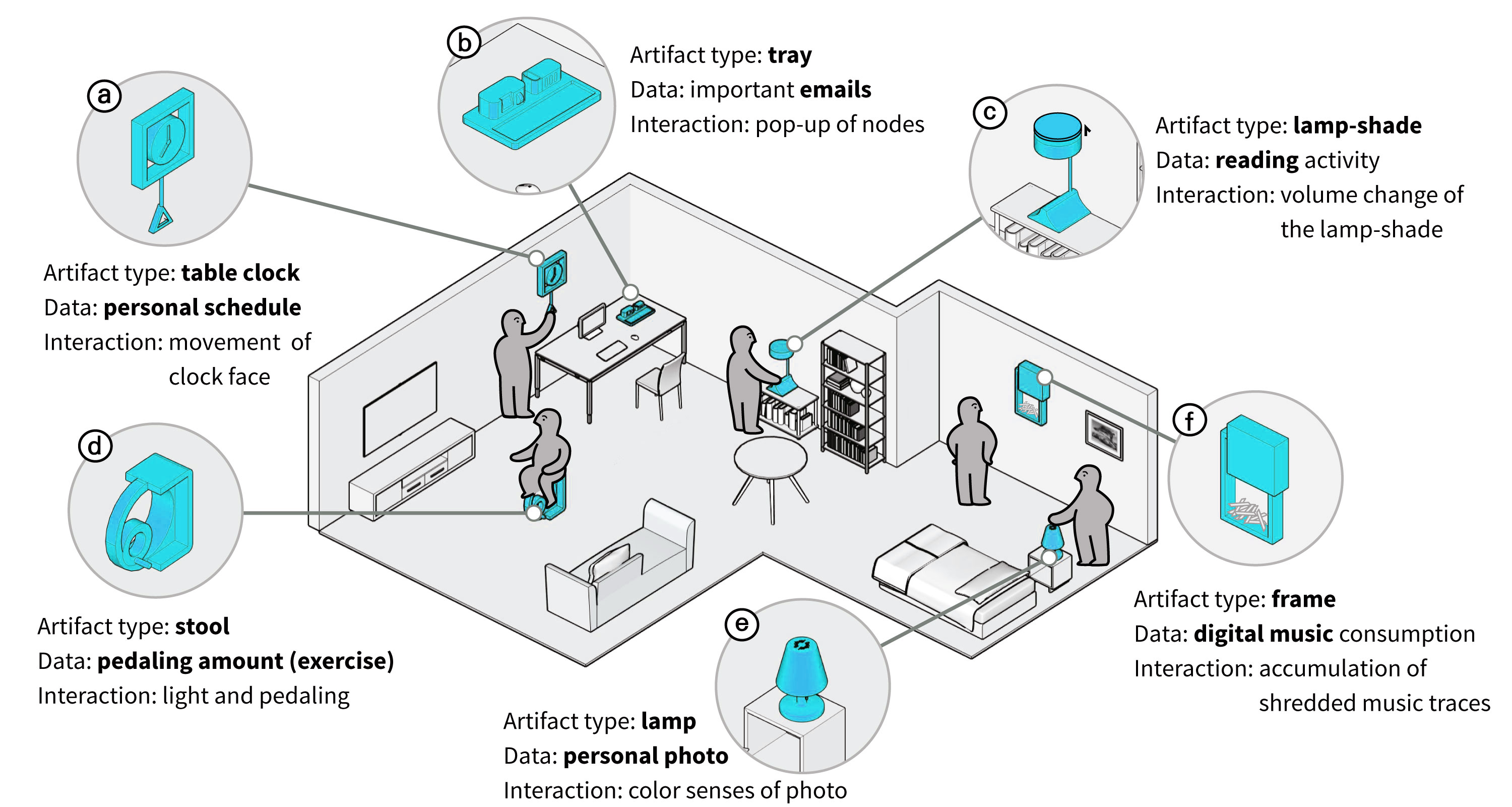Posted by IPD Lab | IPD
People create and consume digital possessions such as photographs, digital music, videos, posts, texts, and documents through smart devices in their daily lives. This behavior has caused an increase in the types and amount of individuals' accumulated data over time, and storing everything "just in case" has made it difficult for people to organize and retrieve the data. Although cloud services and AI make the revisiting experience easy to navigate for particular themes, digital possessions' intangible and indiscriminate nature still affects the limited experiences revisiting individuals' past data. Our research team has investigated ways to provide new designs and interactions using data-driven technologies for meaningful everyday activities, which link to enriching self-reflective experiences. At this point, we utilized everyday objects to show and provide tangible interaction with personal lifelog data to support new experiences in daily life. This video introduces our lab's research vision by showing examples of how people perceive and interact with personal lifelog data (e.g., photos, music listening history, schedules, and reading activity) through everyday artifacts in homes.

Examples of natural encounters include a table clock indicating the beginning of the next schedule in Google Calendar using the movement of the clock hand (a) and a table tray showing only important emails (b). Other examples include a desk lamp that holds the book a user is currently reading, where the time spent reading is shown as the volume of a lampshade (c), or a stool-style cycle that visualizes the pedaling with light and represents the amount of pedaling through the brightness of the light (d). Further examples are a desk lamp that visualizes the representative colors of personal photos (e) and a picture frame that expresses the amount of music consumed by an individual through the shredding of paper song tickets (f).
